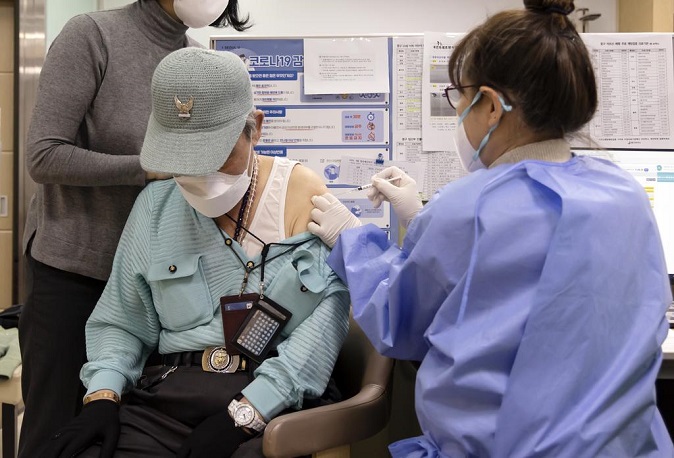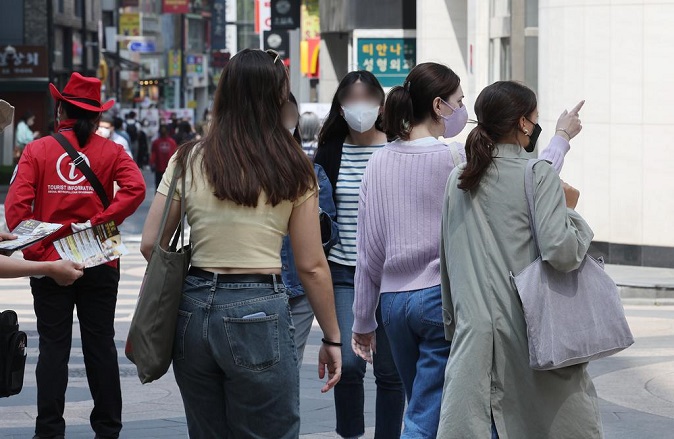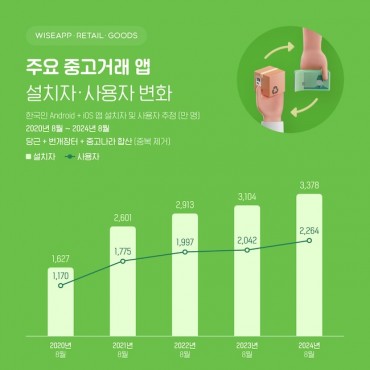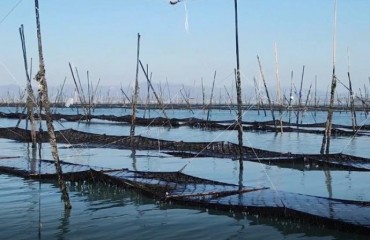
A health worker gives a second COVID-19 booster shot to an elderly man in Seoul on April 14, 2022. (Yonhap)
SEOUL, April 21 (Korea Bizwire) — South Korea reported fewer than 100,000 coronavirus cases Thursday as the omicron curve has turned downward since mid-March.
The country added 90,867 new COVID-19 infections, including 31 cases from overseas, bringing the total caseload to 16,674,045, the Korea Disease Control and Prevention Agency (KDCA) said.
The new tally is down 57,558 cases, or 38.7 percent, from a week ago and marks the lowest number for Thursday since Feb. 17, in an apparent sign of a downward trend in cases of the highly transmissible omicron variant.
The omicron-driven infections have been on the steady decline after peaking at 621,178 cases on March 17.
The death toll from COVID-19 came to 21,667, up 147 from the previous day. The fatality rate was 0.13 percent. The number of critically ill patients came to 846, up 38 from a day ago.
South Korea had reported 76,430 cases as of 9 p.m. Thursday, down 11,366 from the same time the previous day.
Daily cases are counted until midnight and announced the following morning.
Of the locally transmitted infections, Seoul reported 15,192 cases and its surrounding Gyeonggi Province added 22,620 cases. Incheon, 40 kilometers west of Seoul, identified 4,667 cases.
As of midnight Wednesday, 44.53 million, or 86.8 percent of the 52 million population, had been fully vaccinated, and 33 million, or 64.4 percent, had received booster shots, the KDCA said.
The country started this week to administer second COVID-19 vaccine booster shots to people over 60, four months after their first booster dose.
The vaccination rate of second COVID-19 booster shots stood at 3.8 percent among people aged 60 and over, the KDCA said, pleading with the group to get vaccinated to protect themselves from the omicron variant.
“Vaccination can prevent deaths from COVID-19 and reduce risk thereof,” Koh Jae-young, spokesman at the KDCA, said during a briefing Thursday.
“As we are trying to return to normal life, (health) risks facing the age group became even bigger, comparatively speaking,” he said.
South Korea lifted most coronavirus restrictions Monday, except the mask mandate, in a major step toward returning to pre-pandemic life.
“Treating people in their 80s after they get infected might be too late,” Koh said.
The KDCA said the effectiveness of second booster shots are estimated to last for about eight weeks, and their effects on preventing serious illnesses and deaths are believed to last even longer.
But it said it was not considering expanding second booster shots for people aged under 60.
(Yonhap)







